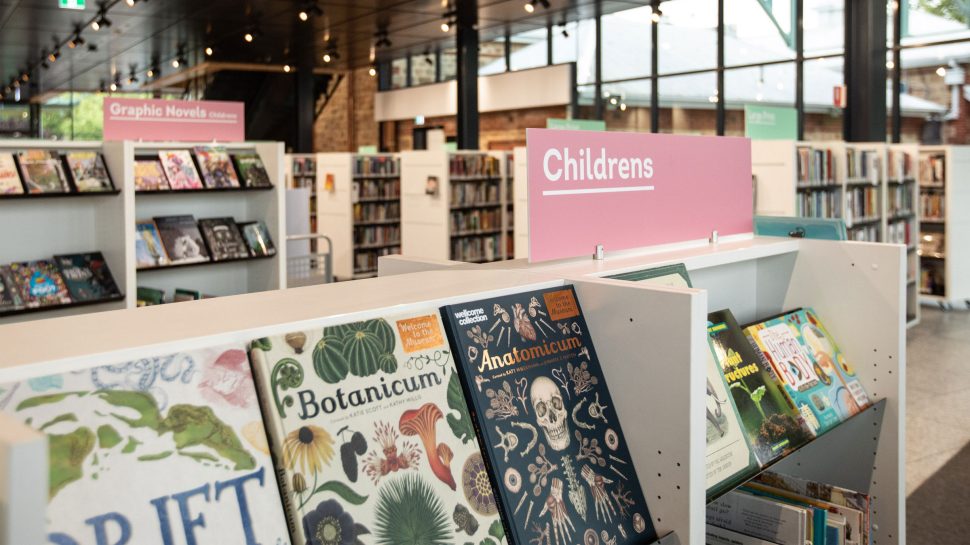Webinar: Connecting with Australians in a 20-min city
In the recent Australia Post Connect webinar, renowned social commentator Bernard Salt AM shared his views on the recent changes to the Australian way of life – working from home, the regional boom and balancing digital expectations with inclusion – and what the future of service delivery could look like.

Key points
- Australians value quality of life, and Bernard Salt expects around 15% of us to keep working from or near home.
- This could re-energise suburban and outer metropolitan areas – fulfilling the vision of a 20-minute city.
- Businesses and governments need to think laterally about how they provide services in suburbs and regions.
Australian society is at an inflection point, and organisations now have an opportunity to re-build the ‘new normal’ to meet our needs and values. That’s the view presented by leading social commentator Bernard Salt, in a recent Australia Post webinar titled, “Connecting with Australians in the 20-minute city”.
Drawing on a vast range of data sets, Bernard showed how social change can be a powerful force that reshapes the way we live, work, transact and connect with each other. He believes working from home will remain an important part of urban life – activating suburbia in new ways, and bringing new energy to regional hubs.
This has profound implications for governments and businesses grappling with new workforce models, talent availability, digital inclusion and evolving expectations for flexible, convenient service delivery.
“Home has really become the centre of our lives,” said Gary Starr, Australia Post Executive General Manager, Business, Government and International, in the webinar.
“We’ve seen big changes; an insatiable demand for services – both digitally and in person – and a focus on flexible lifestyle and convenience.”
It’s all about lifestyle
As the world’s 13th largest economy, Australians enjoy an enviable degree of wealth. And after a long boom, we also have a culture of “outrageous expectation” according to Bernard.
“We spend that wealth, in my view, on housing and quality of life. That touches the core of Australian values,” he said.
Those priorities mean he does not expect working from home numbers to drop back to pre-COVID levels. “There is a better model, and it delivers a better lifestyle… It’s kinder to our mental health, and it reduces our carbon emissions,” he said.
Since 1996, the proportion of Australians working from home has held steady at around 5%. That quickly rose to almost 50% during 2020’s lockdown. Bernard expects the number to stabilise at 10-15% with a hybrid arrangement.1
“Every five percentage points means taking 600,000 workers off the daily commute,2” he said. “And we can take that money that used to be spent on infrastructure, and spend it on strengthening those suburban and regional hubs.”
He also predicts the rise of ‘work near home’ hubs, where instead of commuting into the city centre, people would walk or cycle to a suburban hub and work with local colleagues.
This could change the activation of the suburbs, as well as the nature of work in the city centres. “CBD work might be more for collaboration and training, whereas home is for concentration or creative work,” Bernard suggested.
From sea changers to VESPAs
Beyond the outer suburban fringe, there is also a regional boom – especially in the “goldilocks zone” within 150km of a CBD according to Bernard. And that is all thanks to a new phenomenon he’s dubbed the ‘VESPAs’ – Virus Escapees Seeking Provincial Australia.
In many cases they are taking their city job with them by working from their new home. But they could also bring new professional skills into regional towns – filling short-term talent gaps.
“I do think one of the great opportunities of the next 12 months will be upskilling and relocating, creating a labour force that’s agile and can move,” he said.
According to The Demographics Group’s analysis, four sectors are “going gangbusters” when it comes to job creation – and the majority align with either working from home or working in regional areas.
- Logistics and distribution is booming, and tends to be located on outer metropolitan fringes.
- Technology work – including a 292% explosion in web development and multimedia jobs between February 2020 and February 20213 – could be done remotely.
- Health and medical roles are in demand, and Bernard emphasised the need for more equitable access to health services outside inner city and CBD zones.
- Agriculture and agribusiness demand is also increasing, and is naturally based in regional areas.
Innovating services in the 20-minute city
All these forces will enable the town planning vision of what is known as a ‘20-minute city’ to be realised. Bernard says this will replace the traditional ‘fried egg’ model, with a rich creamy yolk of work and culture in the city centre surrounded by a broad flat suburbia.
“The 20-minute city means you can work from home or near home, and that’s where you shop, get your education, get your medical services,” said Bernard. “And that will strengthen the depth and range of services needed in your local area.”
As the rate of digital adoption accelerates, more services will be delivered direct to the door more often – including telehealth, eCommerce and entertainment streaming.
However, service providers still need to ensure equitable inclusion. “We are going to see a greater proportion of our community aged over 65 over the next 5 or 10 years,” he noted. “They aren’t connected in the same way, but they still need to pay their bills and get their services.”
That could include providing in-person banking through Australia Post’s Bank@Post network.4 Or perhaps thinking outside the box for elder care. In France, La Poste’s ‘Watch over my parents’ (Veiller sur mes parents) service enables postal workers to check on elderly relatives during their morning rounds, to help combat loneliness.5
Building a better model for urban life
For business and government, 2020 was a circuit breaker. We now have an opportunity to strengthen suburban and regional hubs – and think laterally about ways to broaden the services available in them.
“There is a better way of organising our cities,” Bernard said. “There is a better way to deliver our services than expecting everyone to go into the city centre and then back out again. And this is where distribution systems and suburban hubs will be so important.”
If this new way is seamless, efficient, and gets the job done – while also giving us more time to ourselves – why would we get back on the treadmill?
This article is provided for general information purposes only and is not intended to be specific advice for your business needs.
1 Census data 1996-2021, visualised by The Demographics Group.
2 Commentary relating to census data, has been derived from calculations of raw census data. “Australian Bureau of Statistics (2016) Method of Travel to Work (MTWP) [Census Table Builder], accessed 20 February 2021”.
3 Australian Bureau of Statistics Labour Force Survey, released 22 April 2021.
4 Bank@Post is an agency service provided by Australia Post on behalf of over 80 financial institutions. Bank@Post is available at participating Post Offices. Services available are cash withdrawals, deposits and balance inquiries. Consult your financial institution for terms and conditions of the Bank@Post service. Limits apply.
5 Care package: the French postal workers helping lonely older people, The Guardian, 24 November 2018.


